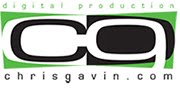I was browsing in the Enfield branch of Waterstones yesterday and saw this new novel
'This Book is Full Of Spiders (Seriously Dude Don't Touch It). Something about that cover artwork gave me a distinct frisson of 'hold on a moment, I think I've seen something a bit like that before...'
Yep, those spiders made out of book pages, don't they look a bit like the ones I made and animated for the '
Little Hands Clapping' promo film I created for Canongate Books back in 2011?
You can watch
my 2011 Little Hands Clapping film for Canongate here if you like.
I like to think I made my little paper spiders with some ingenuity. Here's how I went about creating them and getting them to move...
1: I first drew a short cycle of Flash animation to create a guide animation to figure out the legs moving correctly. I worked out that a walk cycle could be made using nine different poses of the spider.
2: I imported the guide animation into After Effects and used the Path Text to get the writing to run along along the legs (I used passages from Dan Rhodes novel of course).

3: I printed out my sequence of spiders onto thin card.
4: I cut out the printed spiders and folded them a bit to get a more 3D design.

5: I shot the stop-motion animation of my paper spiders using a replacement animation technique to get the scuttling action. I figured that it would be easier to replace the whole spider model each frame rather than trying to bend and shape eight fiddly little paper spider legs! I shot all of the animation using StopMotionPro software and found the previewing features invaluable for positioning the replacements accurately.
It's entirely possible that the artists, photographer and publishing staff working on '
This Book is Full Of Spiders...' never saw my
Little Hands Clapping film. Even if they did, I think that people who design and make things for a living are to some extent often drawing on things they may have seen before. My '
Little Hands Clapping' film certainly has a rather Tim Burton-esque vibe to it; this wasn't a concious lift on my part; it just seemed to result from the black humour of the subject matter and the stop-frame aesthetic. Maybe we all tend to see things and add bits of what we've seen into our own ideas and work.
I made another book trailer film for Canongate in 2011. '
Our Tragic Universe' was a very different kind of novel.
I really enjoyed making these book trailer films and would certainly welcome the chance to make more in the future.


















